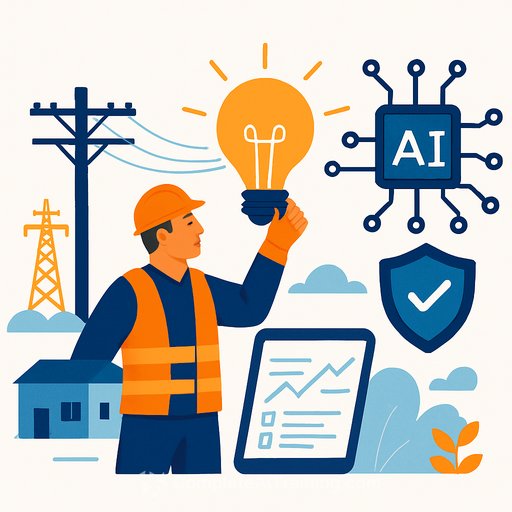Keeping the Lights On: How AI Helps Utilities Support Customers During Outages
The power goes out. Customers reach for their phones. They expect answers fast. In 2023, U.S. electricity customers averaged 6 hours and 11 minutes without power, which turns ordinary days into contact center stress tests.
- Faster resolutions: AI triages and solves routine inquiries in real time, reducing wait times and disconnects.
- Stronger security: Voice biometrics and deepfake detection block fraud and spoofing attacks before they reach agents.
- Natural conversations: Customers use their own words. AI understands and completes tasks without rigid menus.
The outage surge exposes a broken model
During disruptions, the default response is "throw more people at the phones." It breaks. Three out of four agents say they are overwhelmed by tools and information, which slows response and drags down outcomes.
In Colorado, regulators found about 10% of customer calls to one major utility were disconnected before any resolution. At the same time, customers reported longer total outage durations. Reactive staffing can't keep up.
Real-time triage that scales
AI virtual agents handle spikes across voice, chat, and messaging with utilities-specific knowledge. They resolve repetitive questions instantly and escalate edge cases to humans without friction.
When a handoff occurs, the AI passes a clean summary and full history to the agent. No repeating. No reauthentication loops. Just progress.
Customers don't need to punch through DTMF trees. They say "check my statement" or "report an outage," and the system completes the task.
Security that keeps fraud out
Fraudsters use voice spoofing and deepfakes to attack contact centers. A single control won't hold. You need layered defenses that work silently in the background.
- Voice biometrics to authenticate the caller
- Spoof and deepfake detection with a dynamic block list
- Signals for synthetic voices and replay attacks
- Logic and coherence checks to catch scripted or bot-like patterns
The result: faster authentication, higher self-service completion, and fewer risky escalations.
Support your people during the rush
Let AI take the back-to-back calls about payment dates, outage maps, and restoration ETAs. Free up agents for customers in distress or high-stakes scenarios.
Sentiment detection can flag urgency and trigger a warm transfer. Guidance tools coach agents in the moment, so customers get empathy and answers.
Multilingual voice and digital experiences meet customers where they are. This reduces burnout, which matters as budgets tighten and expectations rise. Missed benchmarks lead to real penalties-one utility paid $11.2 million after missing customer satisfaction targets in back-to-back years.
Compliance and CX gains you can measure
- Higher first-contact resolution (FCR)
- Lower average speed of answer (ASA) and hold time
- Lower abandon and disconnect rates
- Higher self-service containment without sacrificing CSAT
- Faster, accurate authentication with fewer false accepts
- Consistent delivery across languages and channels
Implementation checklist for Customer Support leaders
- Connect outage data and CRM so the AI can personalize status, ETAs, and alerts
- Map your top intents: report outage, status, restoration ETA, billing, payment plans, life-safety
- Design a clear escalation path with auto-summaries and context for agents
- Deploy layered security: biometrics, spoof/deepfake detection, and replay defenses
- Pilot on the highest-volume intents, then expand by ROI and risk
- Train agents on new workflows; set QA rubrics for human + AI collaboration
- Measure weekly: FCR, ASA, containment, disconnects, CSAT, authentication pass rates
- Proactively communicate the AI experience to customers and offer opt-outs
- Enable multilingual support and accessibility from day one
- Run outage drills to validate capacity, routing, and escalation logic
What good looks like during an outage
- Inbound calls are greeted with a plain-language prompt and optional callback
- AI verifies identity in seconds and confirms known outage by address
- Customers get an ETA, safety guidance, and an SMS link to the outage map
- High-risk or emotional cases route to a human with full context in the transfer
- Supervisors watch live metrics and adjust staffing in real time
The takeaway
AI in the contact center isn't a nice-to-have during outages. It's an operational, regulatory, and financial safeguard. It reduces wait times, improves first-contact resolution, and keeps fraud out-while giving agents room to do their best work.
Want to skill up your team on practical AI for support? Explore role-based options here: AI courses by job.
Your membership also unlocks:





